-
U.S. Navy tests the second of two railgun prototypes
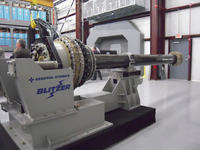
The EM Railgun launcher is a long-range naval weapon that fires projectiles using electricity instead of traditional gun propellants such as explosive chemicals; magnetic fields created by high electrical currents accelerate a sliding metal conductor, or armature, between two rails to launch projectiles at 4,500-5,600 mph; the Office of Naval Research’s Electromagnetic (EM) Railgun program is evaluating the second of two industry railgun prototype launchers at a facility in Dahlgren, Virginia
-
-
Green laser pointer identifies traces of dangerous chemicals in real time
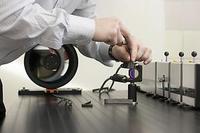
By using an ordinary green laser pointer, the kind commonly found in offices and college lecture halls, an Israeli research team has developed a new and portable Raman spectrometer which can detect minute traces of hazardous chemicals in real time; the new sensor’s compact design makes it a candidate for rapid field deployment to disaster zones and areas with security concerns
-
-
Imagining first responders’ high-tech future
What kinds of gear will be needed by future firefighters, EMTs, and police officers? DHS Science and Technology Directorate researchers asked the experts, then applied sophisticated math to discover unlikely patterns
-
-
Boarding gate with built-in explosives detection speeds up airport security checks

Japanese researchers have developed a boarding gate with built-in explosives detection equipment; the gate collects minute particles which have affixed themselves to IC cards or portable devices used as boarding passes, and can detect within one or two seconds the presence of explosive compounds using internalized equipment; the developers say the gate allows the inspection of 1,200 passengers per hour
-
-
DARPA solicits proposals for offensive cyberwar technologies
DARPA, the Pentagon’s research outfit, announced that next month it will host a meeting for defense contractors in which the agency will outline the Pentagon’s need for “revolutionary technologies for understanding, planning and managing cyberwarfare”; the announcement is the latest indication of the greater willingness of military planners and policy makers to discuss U.S. offensive cyberwar capabilities and plans openly
-
-
Removing toxins from the environment
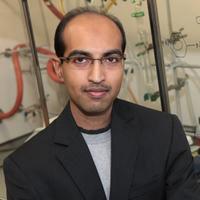
A Florida State University chemist’s work could lead to big improvements in our ability to detect and eliminate specific toxic substances in our environment; the novel approach is based on stripping electrons from the toxic chemical known as fluoride; in addition to toxin removal, the approach has many other applications
-
-
Wearable map-creating device to help first responders
A wearable sensor system automatically creates a digital map of the environment through which the wearer is moving; the system is envisioned as a tool to help emergency responders coordinate disaster response
-
-
Thermoelectric material converts heat waste to electricity
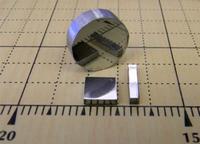
Scientists have developed a thermoelectric material which they claim is the best in the world at converting waste heat to electricity; this is very good news, since nearly two-thirds of energy input is lost as waste heat
-
-
Threat-recognition technology incorporates mind, machine

For soldiers operating in the field, the ability to detect threats from standoff distances can be life-saving; when advanced radar and drone coverage is not available, soldiers typically rely on their own vision to scan their surroundings; DARPA links human brainwaves, improved sensors, and cognitive algorithms to improve target detection
-
-
Harvesting fuel for nuclear reactors from the sea
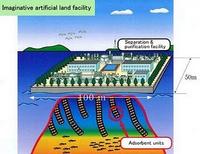
Uranium floats in Earth’s oceans in trace amounts of just 3 parts per billion. It is not much, but it adds up; combined, our oceans hold up to 4.5 billion tons of uranium — potentially enough to fuel the world’s nuclear power plants for 6,500 years; researchers propose ways to harvest this uranium
-
-
Dry-run experiments confirm key aspect of Sandia nuclear fusion concept
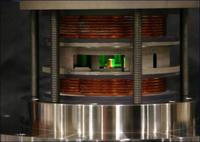
Magnetically imploded tubes called liners, intended to help produce controlled nuclear fusion at scientific “break-even” energies or better within the next few years, have functioned successfully in preliminary tests, according to researchers
-
-
DARPA’s legged robot beats Usain Bolt’s speed record
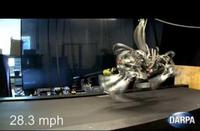
Usain Bolt, Olympic gold medalist and world record-holder sprinter, set the world speed record for a human in 2009 when he reached a peak speed of 27.78 mph for a 20-meter split during the 100-meter sprint; DARPA’s Cheetah robot, already the fastest legged robot in history, bested Bolt recently by clocking at 28.3 mph for a 20-meter split
-
-
U.K.’s first research institute to investigate the science of cyber security
A new U.K. academic research institute, aiming to improve understanding of the science behind the growing cybersecurity threat, was announced last week; GCHQ, the U.K. intelligence agency, says that the institute, which is funded by a £3.8 million grant, is part of a cross-government commitment to increasing the U.K. academic capability in all fields of cybersecurity
-
-
Nuclear waste-burning technology to make nuclear energy more appealing
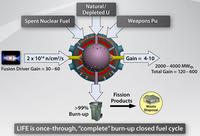
Toxic nuclear waste is stored at sites around the United States, and the need to store nuclear waste is widely considered to be a major disadvantage associated with nuclear energy; physicists have been granted a U.S. for patent for a novel fusion-fission hybrid nuclear reactor which would use nuclear fusion and fission together; the invention could drastically decrease the need for any additional or expanded geological repositories, making nuclear power cleaner and more viable
-
-
Nanotechnology sensor detects mercury in water, fish

When mercury is dumped into rivers and lakes, the toxic heavy metal can end up in the fish we eat and the water we drink; to help protect consumers from the diseases and conditions associated with mercury, researchers have developed a nanoparticle system that is sensitive enough to detect even the smallest levels of heavy metals in our water and fish
-
More headlines
The long view
New Technology is Keeping the Skies Safe
DHS S&T Baggage, Cargo, and People Screening (BCP) Program develops state-of-the-art screening solutions to help secure airspace, communities, and borders
Factories First: Winning the Drone War Before It Starts
Wars are won by factories before they are won on the battlefield,Martin C. Feldmann writes, noting that the United States lacks the manufacturing depth for the coming drone age. Rectifying this situation “will take far more than procurement tweaks,” Feldmann writes. “It demands a national-level, wartime-scale industrial mobilization.”
How Artificial General Intelligence Could Affect the Rise and Fall of Nations
Visions for potential AGI futures: A new report from RAND aims to stimulate thinking among policymakers about possible impacts of the development of artificial general intelligence (AGI) on geopolitics and the world order.
Keeping the Lights on with Nuclear Waste: Radiochemistry Transforms Nuclear Waste into Strategic Materials
How UNLV radiochemistry is pioneering the future of energy in the Southwest by salvaging strategic materials from nuclear dumps –and making it safe.
Model Predicts Long-Term Effects of Nuclear Waste on Underground Disposal Systems
The simulations matched results from an underground lab experiment in Switzerland, suggesting modeling could be used to validate the safety of nuclear disposal sites.
